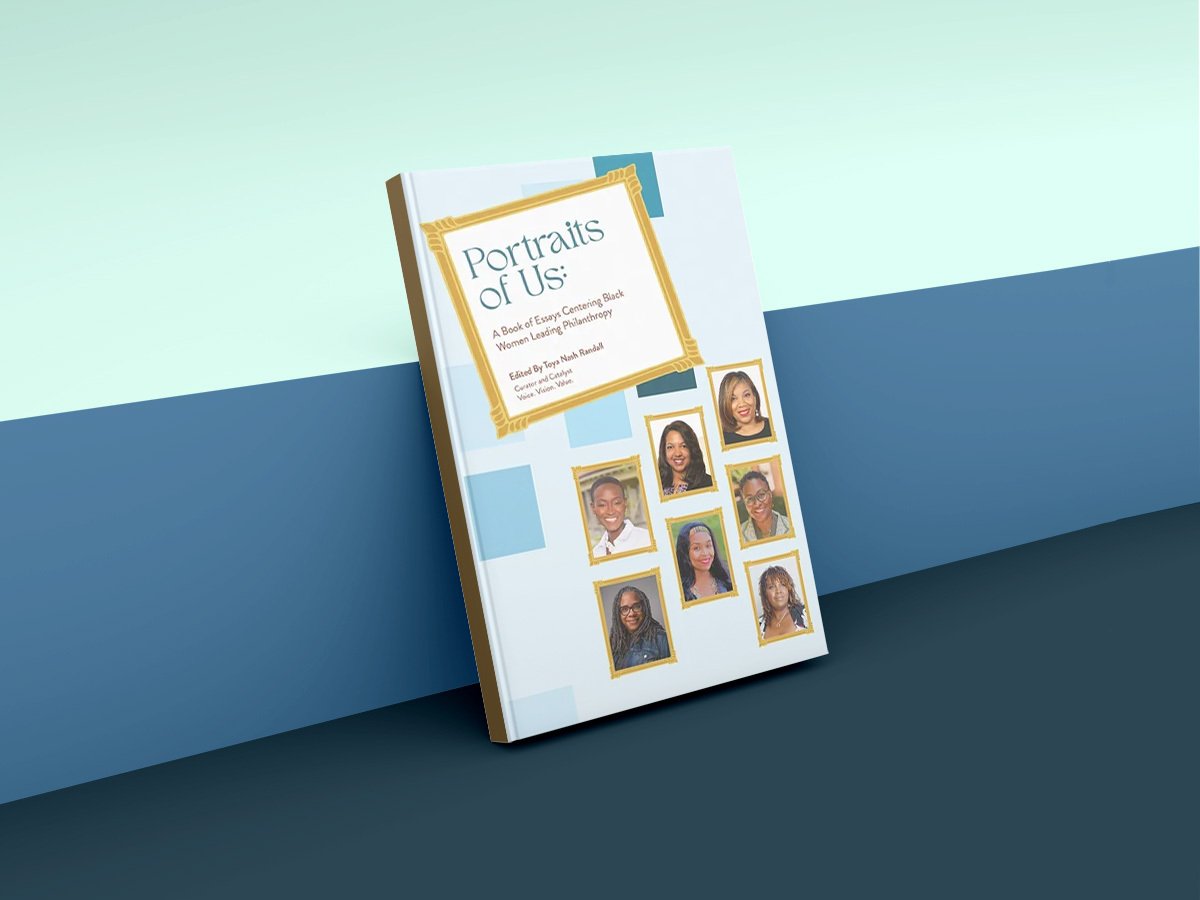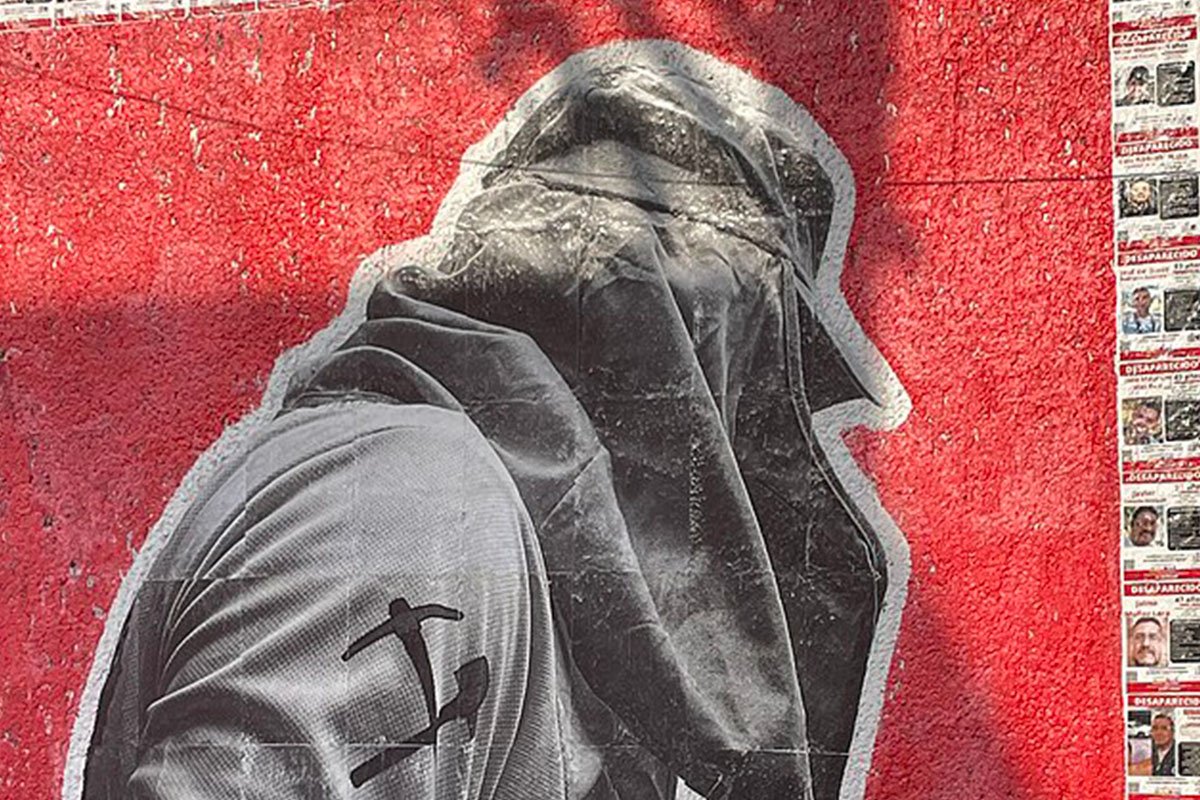
“Simply put, Black women are the backbone of modern day philanthropy.” So asserts a new book, Portraits of Us: A Book of Essays Centering Black Women Leading Philanthropy, edited by Toya Nash Randall, former board chair of Black Foundation Executives and “curator and catalyst” of Voice. Vision. Value., the digital platform that published the book in partnership with Blacks in Philanthropy Networks and Regional Associations of Grantmakers.
Despite their many and powerful contributions to the sector, Black women have been both underrepresented and underappreciated in the landscape of American philanthropy.
“Black women are the backbone of modern day philanthropy.”
Portraits of Us centers the experience, accomplishments, and collective wisdom of over 200 Black women deeply involved in philanthropy, including CEOs, executive directors, and other executives overseeing millions of dollars in philanthropic funds.
These Black women in philanthropy see themselves as carrying on a legacy passed down to them from grandmothers, mothers, aunties, cousins, teachers, churches, and community elders. They know what generations of women before them knew: that it not only takes a village to raise a child, but that it also takes a village to sustain it (15).
The book comprises photographic and textual portraits of these women gathered in person—often for the first time—in different cities and regions across the United States.
“Their names go unspoken and their efforts are overlooked.”
The project, Randall told NPQ, came out of a desire among her peers and colleagues for a “space for Black women leaders to come together as a community, be in conversation with one another about their experiences in philanthropy, professional development, career advancement, wellness.…Those conversations had been occurring, in pockets, across the sector for a few years.”
In 2013, ABFE, which promotes effective philanthropy in Black communities, held its first Women in Philanthropy retreat, an event that helped inspire Randall’s ambition to document the ongoing legacy of Black women in philanthropy in a book, as well as digitally in the form of her Voice. Vision. Value. platform.
Ticking off the names of Black women philanthropic leaders, Randall describes a rich, diverse ecosystem supporting countless causes and communities across the United States, “but their names go unspoken, and their efforts are overlooked, and they don’t have wide recognition for what they’ve done,” she told NPQ. “And that’s really what the book is about.”
Overcoming Stereotypes and Stigma
Portraits of Us offers both a literal portrait of Black women in philanthropy and a figurative one, describing these women’s experiences that often include struggling against stereotypes, stigma, and racism.
Black women have to contend with dominant narratives about our temperament, commonly described as “the angry Black woman.” This narrative is amplified in the South, where respectability and congeniality are woven into the fabric of the region’s culture along with the remnants of Jim Crow, and where the comfort of White people is paramount.…Additionally, there is a dominant narrative in philanthropy that Black people are often the recipients of charity rather than the people who give (119).
At the same time, the book notes, many Black women in the sector struggle with managing their own internal doubts and so-called “imposter syndrome,” especially when coming into the sector via nontraditional, or at least nonprivileged routes.
Many Black women in philanthropy admit to stumbling into the field.…Their previous work in the community propelled them into a moment that was greater than themselves.…Their journey into philanthropy just like Black women’s journey into any workplace, especially has been fraught with White supremacy, patriarchy, betrayal from women of every race, jealousy, accusations of reverse racism and wage disparities, to name just a few issues (15).
Editor and curator Randall says one of the recurring themes of her years-long research into the landscape of Black women in philanthropy was a feeling among these women of isolation.
“People of color continue to struggle with imposter syndrome, and feeling like the work they produce and the ways in which we show up are highly scrutinized,” Randall told NPQ. “And so we’re working hard to position ourselves as worthy, to be in these spaces and to be in positions to influence and inform investments in communities where we come from and where we still have family and people who we love and care deeply about, who are still grappling with issues and living in communities that experience disparities.”
There’s a contradiction, Randall notes, in the degree to which Black women often bring superior life experience to their philanthropic work on the one hand, and the degree to which they can be viewed with suspicion or dismissal in philanthropic spaces on the other.
Sign up for our free newsletters
Subscribe to NPQ's newsletters to have our top stories delivered directly to your inbox.
By signing up, you agree to our privacy policy and terms of use, and to receive messages from NPQ and our partners.
“So, there’s a lived expertise and a lived experience that we share, that uniquely positions us to inform solutions—but it can also sometimes hinder our sense of confidence and, being in these spaces, our confidence is undermined because of the unique experience and expertise that we have.”
Portraits of Us, however, offers a different vantage of Black women in philanthropy, one of women who have “declared that shrinking themselves in an attempt to survive in a workplace is not an option.”
Finding Strength in Solidarity
By showcasing these cohorts of Black women in philanthropy across the country, Portraits of Us highlights the actual and potential strength these women can find in community with each other:
Finding other Black women like themselves in their field has been a lifeline. The encouragement that characterizes the sisterhood has helped them be bold and unapologetic about who they are and what they bring to the profession (17).
Such solidarity matters, not just in terms of helping sustain individual leaders, but also in the impact these women’s work can have on the communities they seek to aid and improve.
Portraits of Us profiles, for example, the work of Black women philanthropic leaders in New Orleans, in the wake of Hurricane Katrina:
After Hurricane Katrina, Black women in New Orleans, and specifically those in philanthropy who were connected to the city and cared deeply about its survival, were keenly aware that philanthropy must reimagine and model investments that localized empowerment on the ground—especially if Black families, institutions and neighborhoods were to survive the reset of New Orleans (19).
Portraits of Us offers similar examples of leadership by Black women in communities around the country, including in Minneapolis, after the murder of George Floyd; in Chicago, where Black women have carved out an impressive presence in local philanthropy; and in Ohio, the Southeast, the Pacific Northwest, Kansas City, MO, the Bay Area, and Los Angeles.
The Power of Convening
“We come from a philanthropic people.”
Part of what makes Portraits of Us unique is the process of convening the book’s subjects as part of its creation.
To gather these group portraits, editor and curator Randall had to physically bring together local and regional cohorts of Black women in philanthropy—women who, in many cases, had never met each other in person.
“What Portraits of Us allowed was for women in nine regions to just get together in a room, at a restaurant or in the library and tell their stories,” notes Randall.
The process of creating the book, Randall hopes, was also a process of creating or solidifying community among these women—a legacy she hopes will continue on its own.
“My hope is that women will continue to gather and convene with one another in these organic and organized ways that speak to the issues that are important to them, and understand that the power to convene together—we have that power and we have that ability,” Randall told NPQ. “And so I’m hoping that it is a gift that keeps on giving.”
And despite the challenges Black women face as leaders in philanthropy, Randall expects their contributions to the field to continue to be robust.
“We come into the sector from a vast array of experiences and professions that are closer to the community and closer to the space of advocacy in areas of social justice,” says Randall. “But also, we come from a philanthropic people.…Black people are some of the most philanthropic folks, whether that’s through our giving to our institutions of faith, to community-based organizations, or in the giving of our own time.”
“I think that sense of clarity is becoming more grounded in our knowing and how we situate ourselves in this work.”











